Jodhpur
A complete tourist and cultural guide
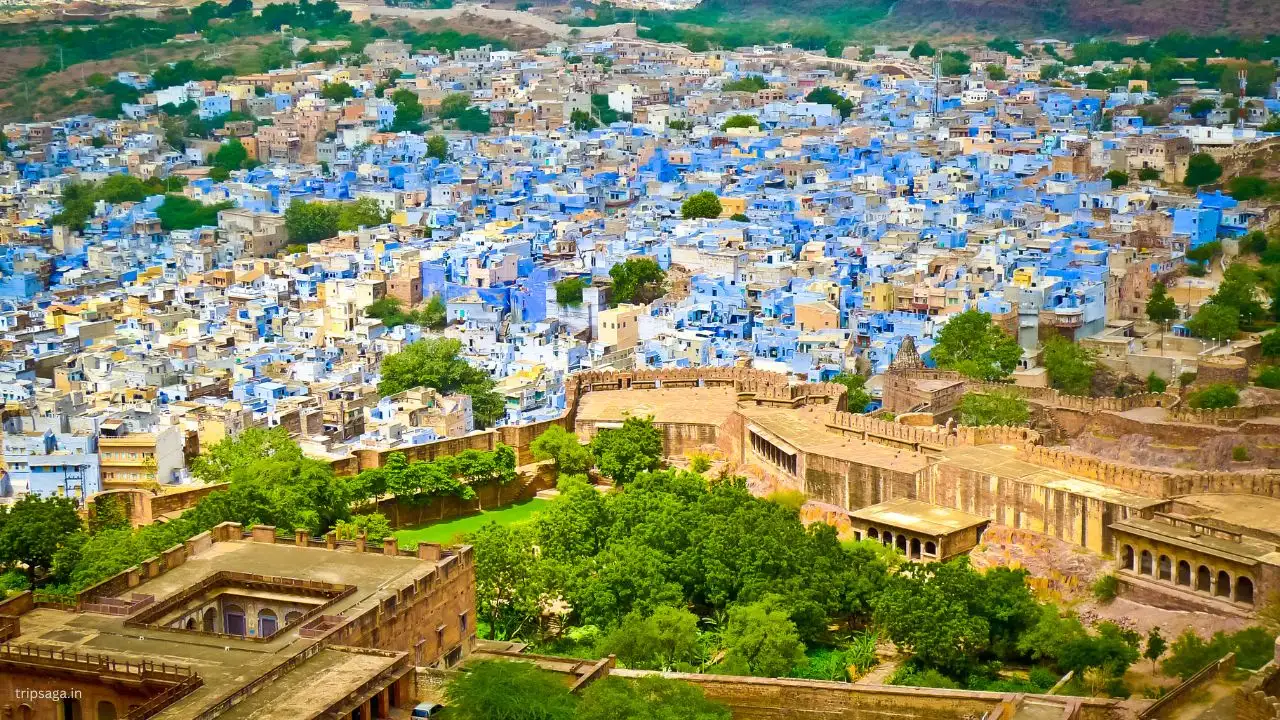
Jodhpur, often called the “Blue City” for its vividly painted houses, is a captivating blend of history, royalty, and culture. Nestled at the edge of the Thar Desert, it offers an immersive experience through its majestic forts, ornate palaces, and bustling old bazaars. With the iconic Mehrangarh Fort towering above the city, Jodhpur is not just a visual delight but also a deep dive into Rajasthan’s regal past. Visitors are drawn to its warm hospitality, rich flavors, and vibrant traditions.
Wiki Link : Jodhpur
Must-Visit Attractions in Jodhpur
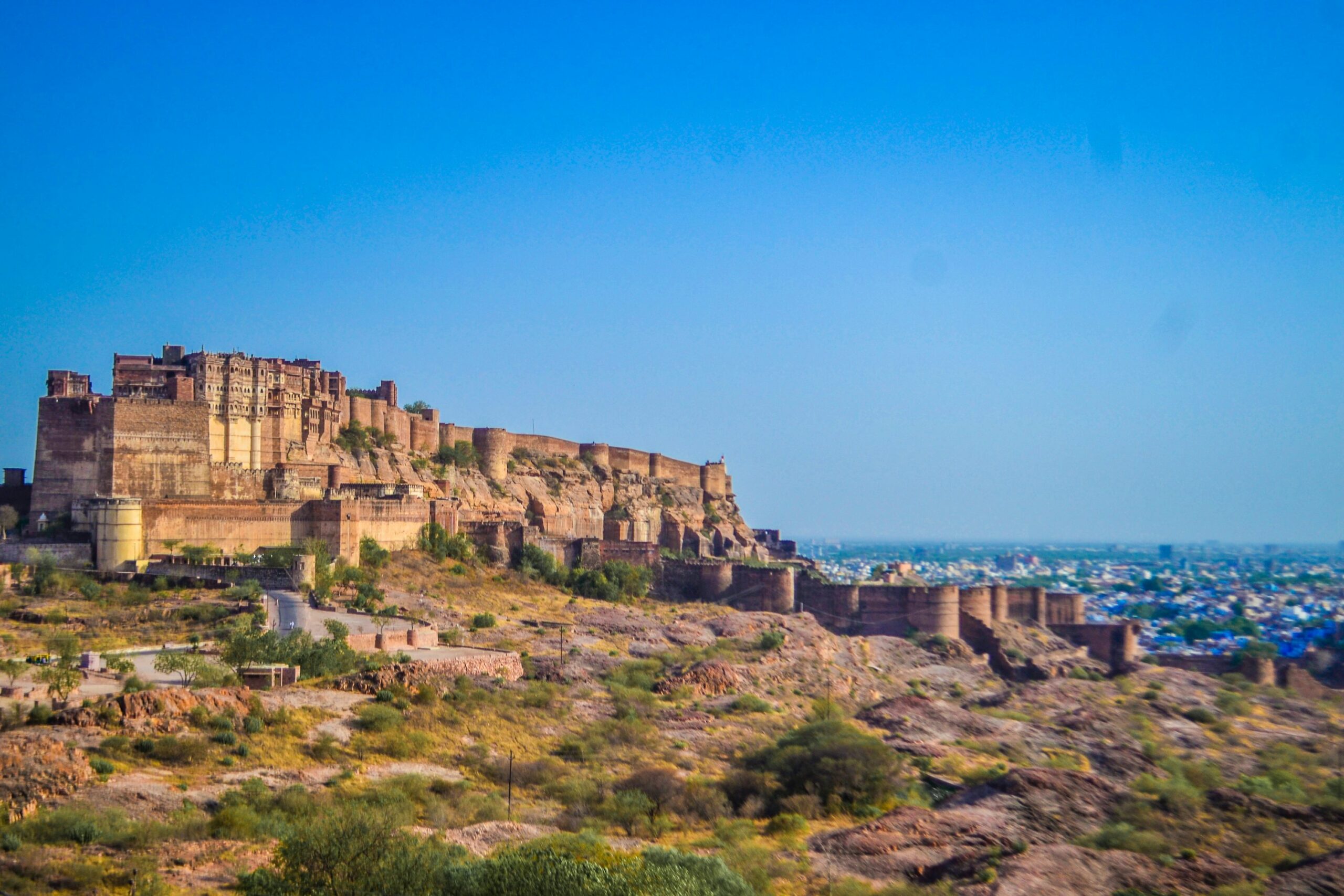
Mehrangarh Fort
This iconic fort dominates Jodhpur’s skyline with its massive walls, intricate carvings, and sprawling courtyards.
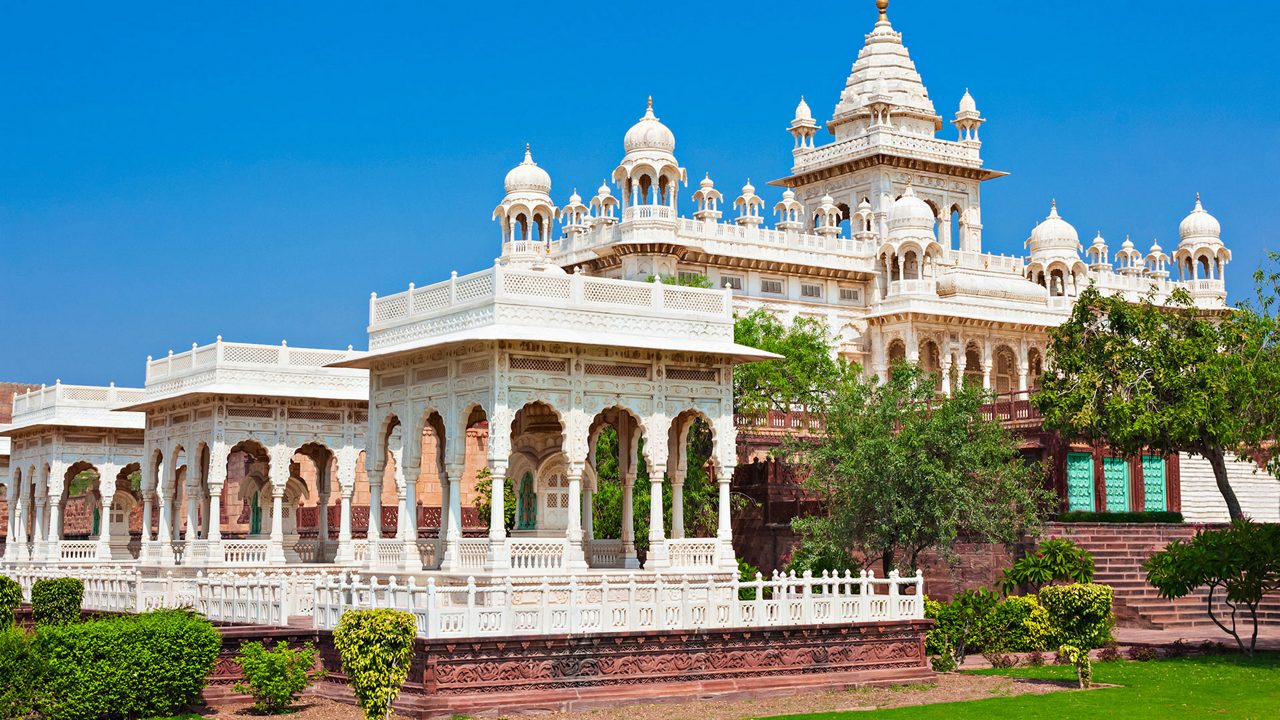
Jaswant Thada
Known as the Taj Mahal of Marwar, this marble cenotaph is surrounded by a serene lake and gardens, offering a tranquil escape.
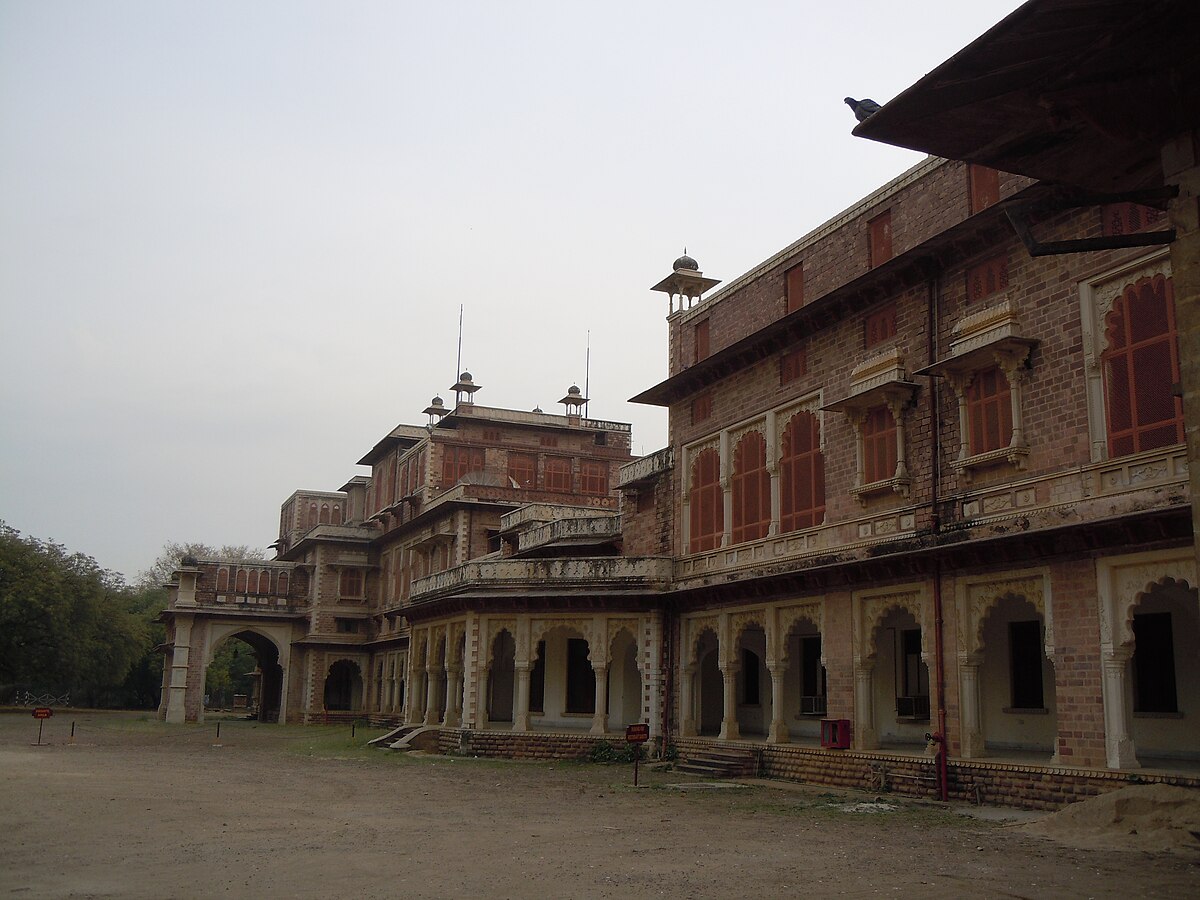
Umaid Bhawan Palace
Part royal residence, this opulent palace is the last palaces built and boasts a museum showcasing vintage cars and artifacts.
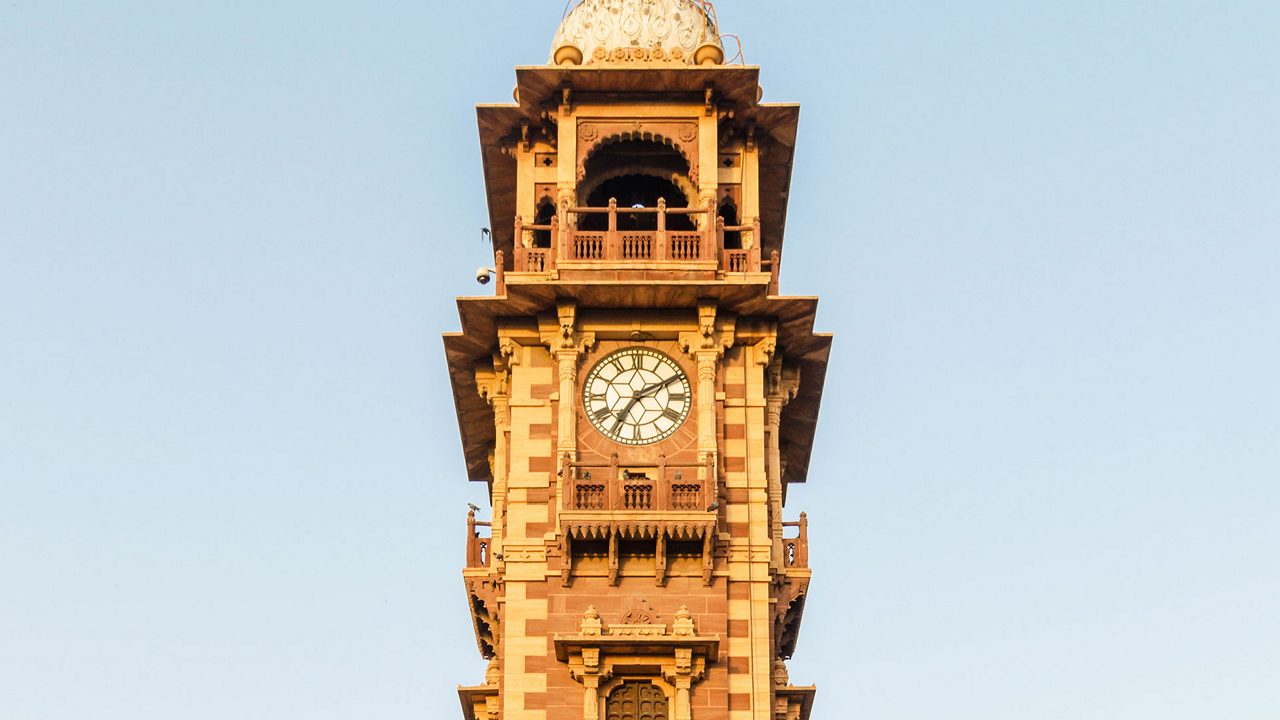
Clock Tower & Sardar Market
A hub of local life, this vibrant bazaar near the iconic Clock Tower is perfect for shopping and enjoying local street food.
Major Attractions Nearby Jodhpur
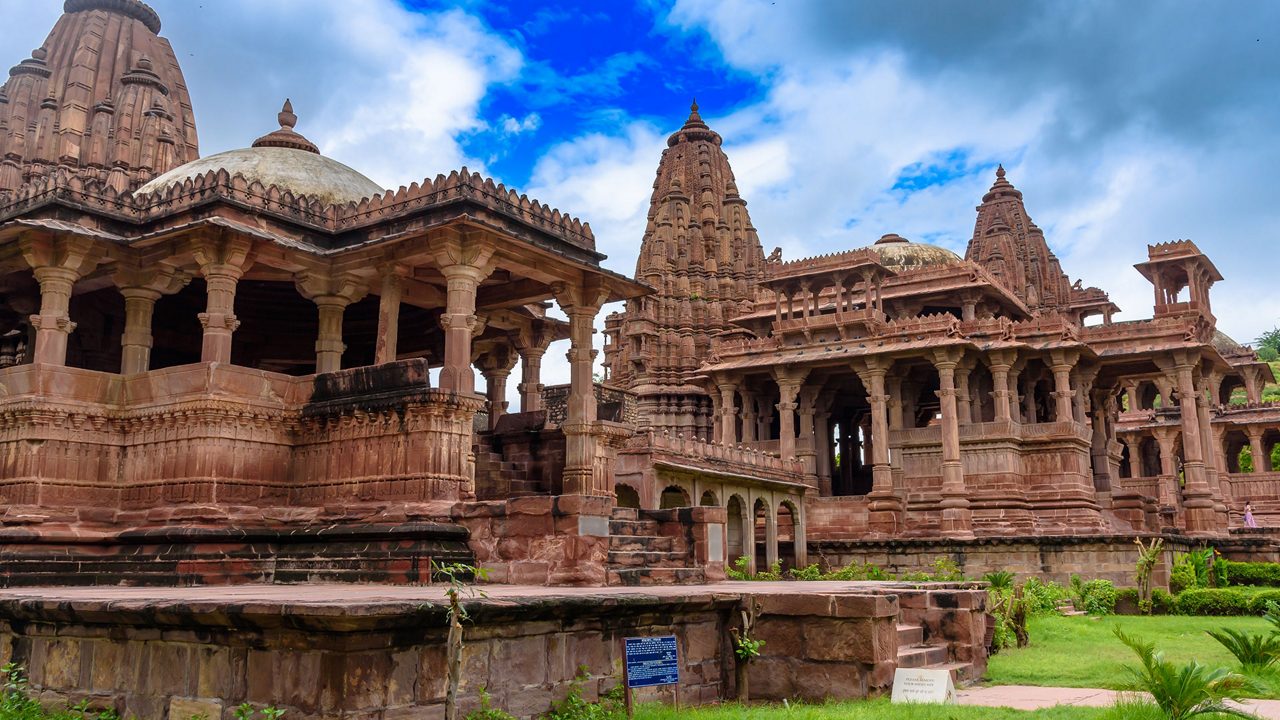
Mandore Gardens
This historic site features beautiful gardens, temples, and the cenotaphs of Jodhpur’s former rulers, making it a peaceful yet culturally rich excursion.
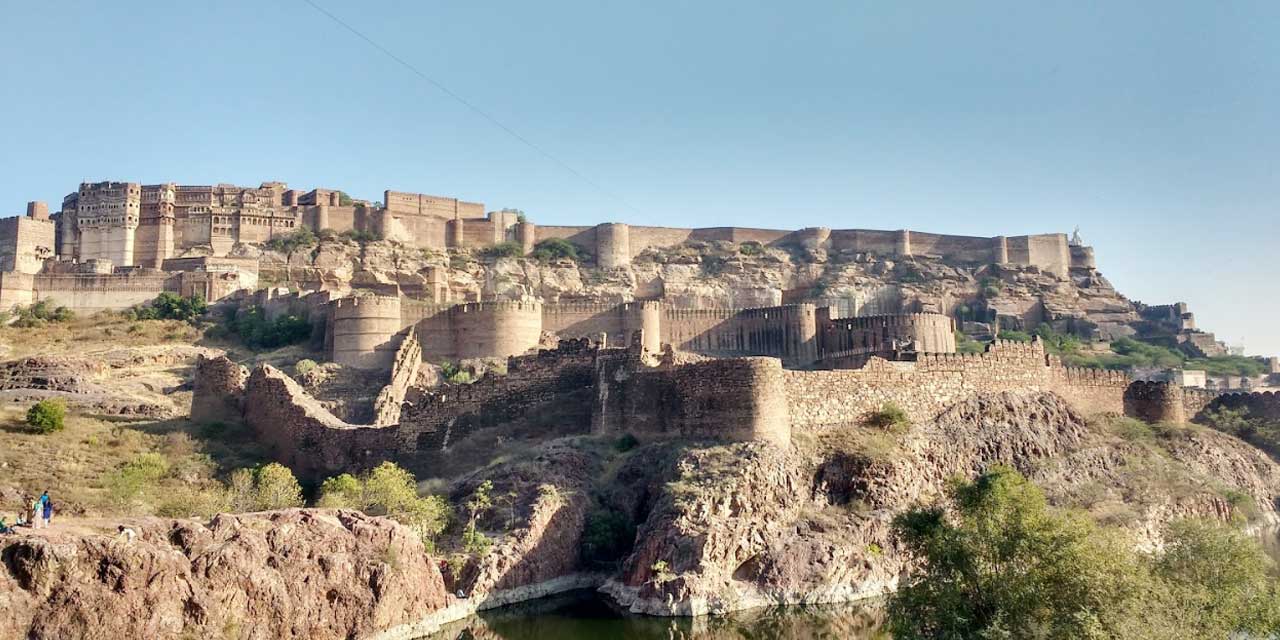
Rao Jodha Desert Rock Park
Set at the base of Mehrangarh Fort, this showcases native desert flora and offers scenic trails with sweeping views of the Blue City.
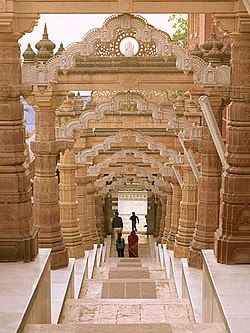
Osian Temples
Often called the ‘Khajuraho of Rajasthan’, is home to intricately carved Hindu and Jain temples dating back to the 8th century, set amidst the desert dunes.
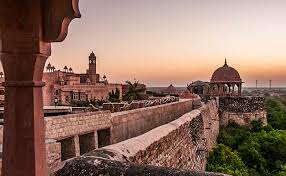
Khimsar Fort
A 16th-century fort now transformed into a heritage hotel, Khimsar offers royal hospitality along with views of sand dunes and traditional village life.
Things to do in Jodhpur
Discover the royal charm of Jodhpur through immersive experiences that blend culture, adventure, and local flavors.

Explore the Blue Lanes of the Old City
Wander through the enchanting blue-washed alleys of Jodhpur’s old quarters, soaking in traditional Rajasthani architecture.

Ziplining at Mehrangarh Fort
Get your adrenaline pump with a thrilling zipline ride that offers view of the fort, lakes, and rugged terrain surrounding the historic monument.
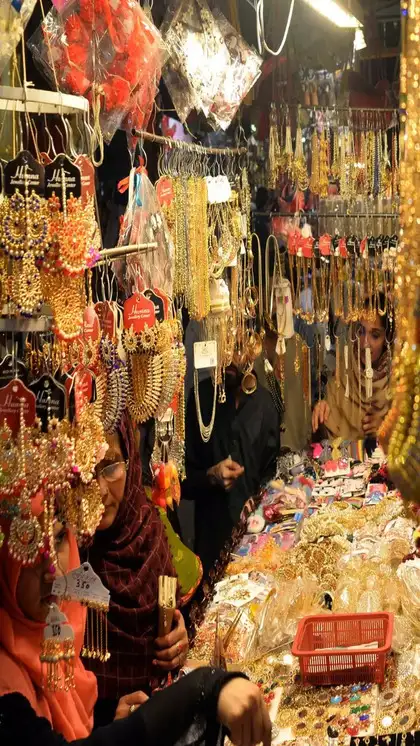
Shop for Handicrafts at Local Bazaars
Visit Sardar Market or Nai Sarak for a wide array of handicrafts, Bandhani fabrics, mojris (leather footwear), spices, and antique-style home décor.
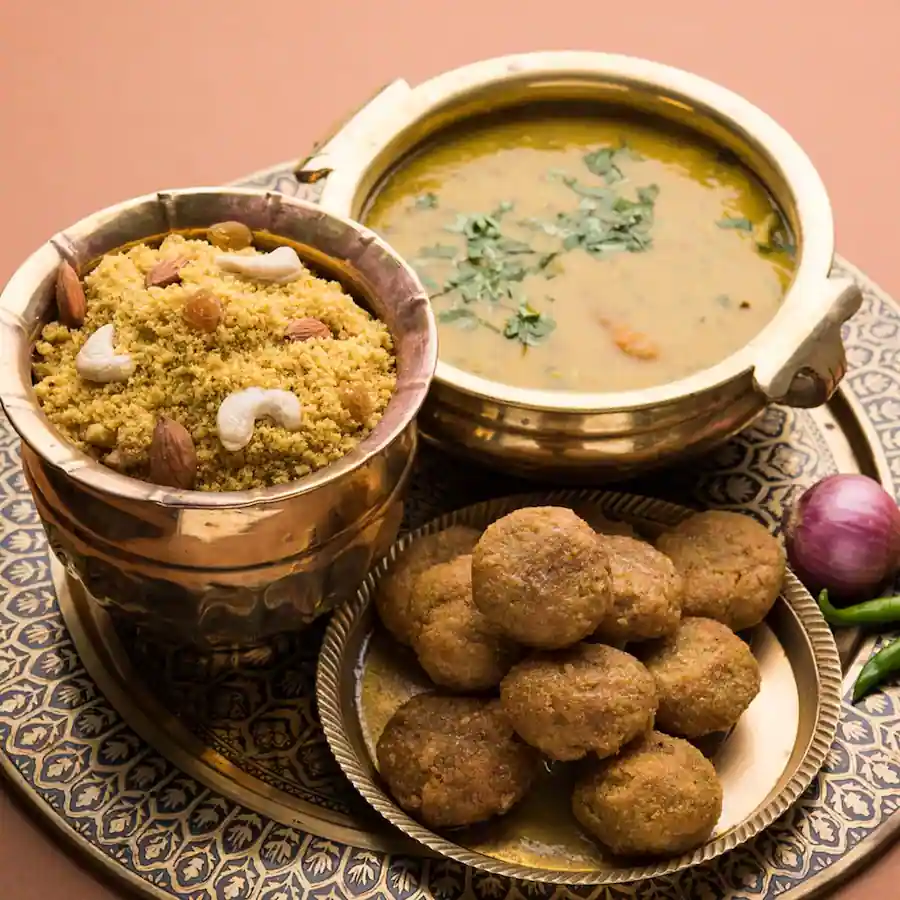
Savor Rajasthani Cuisine
Indulge in rich Rajasthani flavors with dishes like dal baati churma and mirchi vada at local eateries for an authentic culinary experience.
The Performing Art of Jodhpur
Performing arts reflect the rich Rajasthani tradition, blending music, dance, and storytelling. Folk performances like puppet shows and Bhavai plays captivate audiences with vibrant costumes and expressive narratives. These cultural expressions are often showcased during festivals and fairs, giving visitors a glimpse into the region’s soulful heritage.
Maand
Bhajans
Manganiyar
The soulful Maand evokes royal elegance and romance, while Manganiyar music, performed by hereditary musicians, tells stories of valor and devotion with instruments like the kamaicha and dholak. Bhajans add a spiritual dimension, often sung during temple rituals and community gatherings, keeping the region’s devotional spirit alive.
Ghoomar
Bhavai
Kalbeliya
Ghoomar, traditionally performed by Rajput women in graceful swirling motions. Kalbeliya, known for its serpentine movements and energetic rhythm, is performed by the Kalbeliya tribe. Bhavai is a balancing act that involves dancing with pots or brass pitchers stacked on the head, demonstrating extraordinary skill and poise

City Vibes - Timeless Historic Charm
Jodhpur exudes a timeless historic charm, where every corner narrates tales of valor, royalty, and tradition. The city’s blue-painted houses beneath the mighty Mehrangarh Fort create a surreal blend of color and culture. Bustling bazaars, echoing folk music, and regal havelis transport you to a bygone era. Despite modernization, Jodhpur retains its essence of Marwari hospitality, slow-paced life, and old-world elegance, offering an experience that’s both rooted and regal.
Heritage of Jodhpur
Steeped in royal grandeur and architectural brilliance, reflecting the legacy of the Rathore dynasty. The imposing Mehrangarh Fort, perched on a rocky hill, stands as a testament to Rajput valor and artistry. Palatial structures like Umaid Bhawan Palace and Jaswant Thada showcase intricate carvings, Indo-Saracenic designs, and regal lifestyles. The city’s blue-painted old quarters and traditional havelis mirror a blend of history, culture, and community life.

Cuisine of Jodhpur
A flavorful blend of rich spices, traditional Rajasthani cooking methods, and a love for hearty, vegetarian dishes

Mirchi Bada
A popular street snack made from large green chilies stuffed with spicy potato filling, dipped in gram flour batter, and deep-fried until golden.

Mawa Kachori
A sweet delicacy filled with rich mawa (khoya), dry fruits, and cardamom, deep-fried and soaked in sugar syrup—a must-try dessert in Jodhpur.
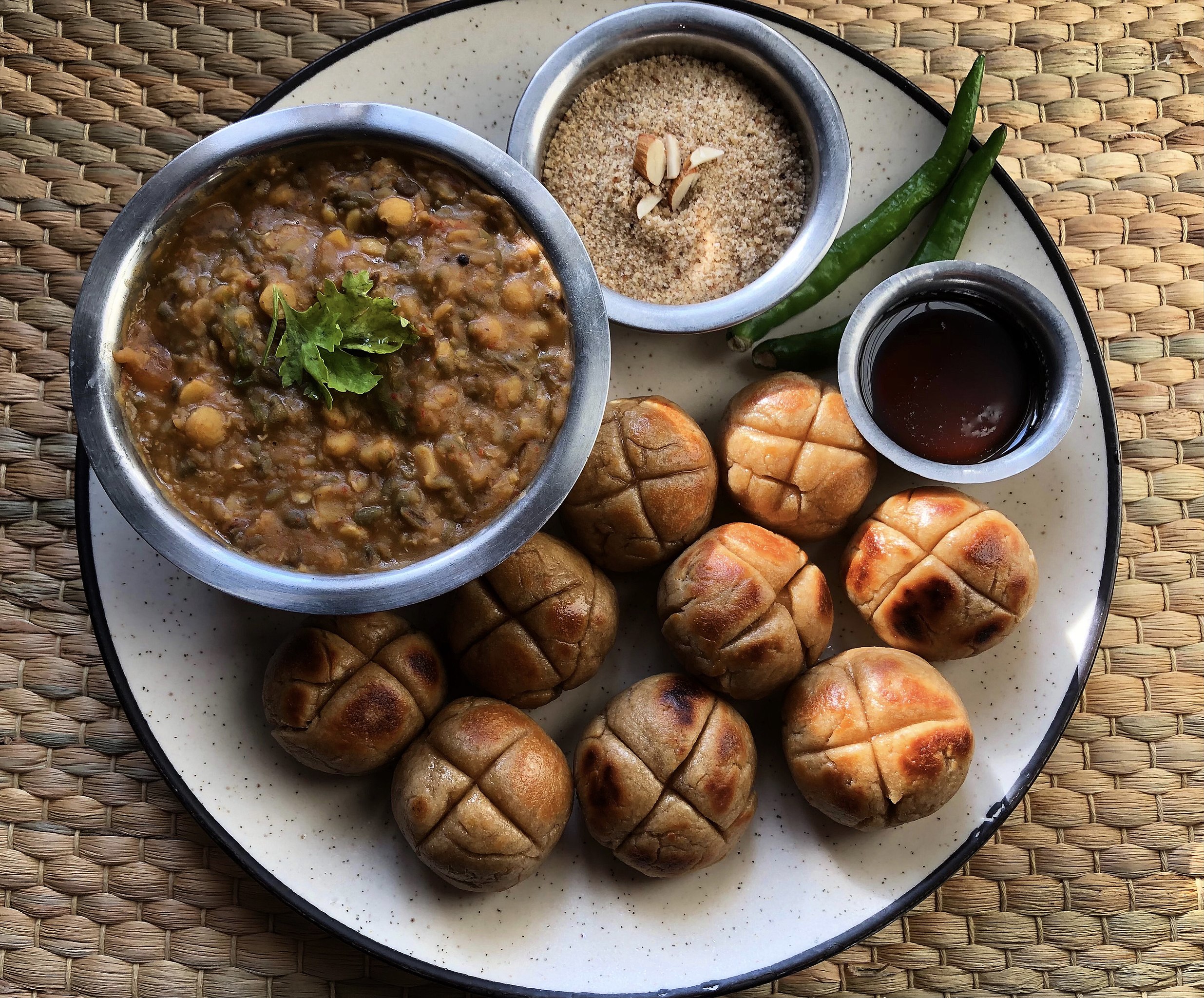
Dal Baati Churma
A quintessential Rajasthani meal where baked wheat baatis are served with spicy dal and sweet churma, reflecting the desert cuisine.
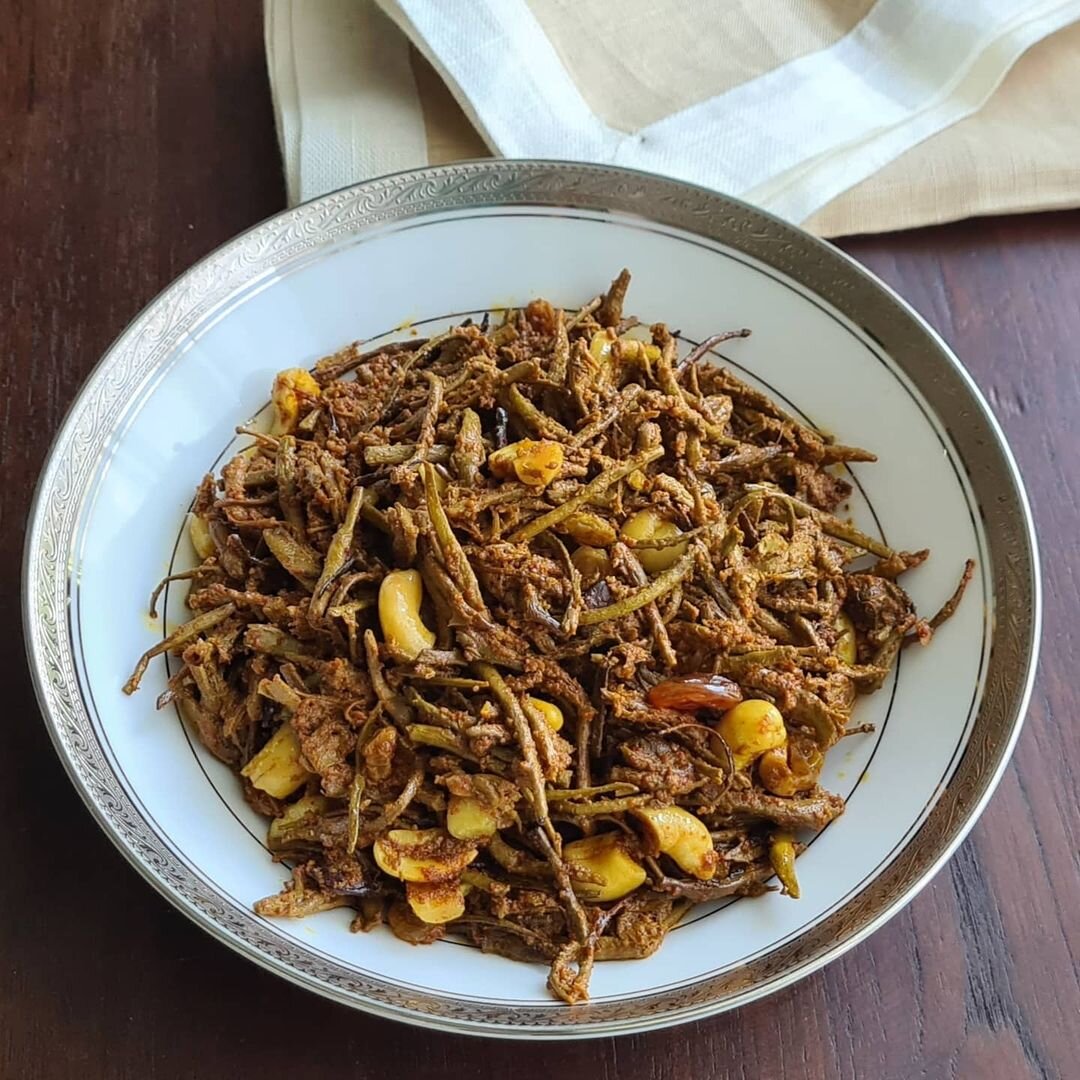
Ker Sangri
A traditional dish made with dried desert berries and beans, cooked in aromatic spices, often enjoyed with bajra roti and ghee.
Shopping in Jodhpur
Offers a vibrant shopping experience filled with rich textiles, handcrafted goods, and traditional art. The bustling markets reflect the city’s cultural roots and are perfect for picking up authentic Rajasthani souvenirs.

Bandhani Sarees
Known for their tie-dye patterns and bright colors, Bandhani fabrics are a staple of Jodhpur’s textile heritage and are widely available in local bazaars.
Handcrafted Jodhpuri Mojaris
These intricately embroidered leather shoes are both stylish and comfortable, often worn during festive occasions.
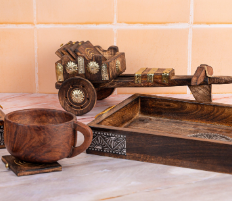
Antique Handicrafts
From vintage locks to decorative figurines, Jodhpur’s metalwork showcases expert craftsmanship passed through generations.
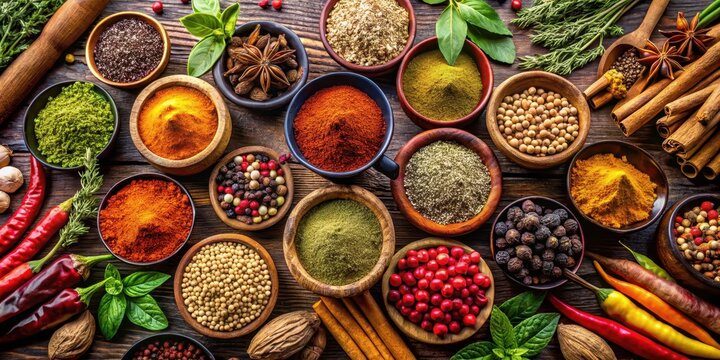
Spices & Herbal Teas
The spice markets are filled with vibrant aromas—pick up saffron, chili powder, or soothing herbal teas unique to the region.
Tourist's Handbook
The best season to visit Jodhpur is from October to March, when the weather is cool, pleasant, and ideal for exploring forts, palaces, and bazaars. Winter brings comfortable daytime temperatures perfect for sightseeing and enjoying cultural festivals like the Marwar Festival. Avoid the scorching heat of summer and the humidity of the monsoon season for a more comfortable travel experience.
Stay Hydrated & Use Sunscreen – Jodhpur can be hot and dry, especially in summer. Carry water and apply sunscreen when exploring outdoor attractions.
Be Alert in Crowded Areas – Markets like Sardar Bazaar can get busy; keep an eye on your belongings to avoid pickpocketing.
Respect Local Customs – Dress modestly, especially when visiting temples or old city areas. Remove footwear when required.
Negotiate Fares – Auto-rickshaw and taxi fares can vary; agree on a rate beforehand or opt for app-based services where available.
Avoid Isolated Alleys at Night – Stick to well-lit streets and avoid venturing alone late at night, especially in unfamiliar parts of the city.
Navigating Jodhpur is convenient with several local transport options. Auto-rickshaws are widely available and ideal for short distances within the city. For a more comfortable ride, taxis and app-based services like Ola operate efficiently in most areas. Walking is a great way to explore the narrow lanes of the old city and markets near the Clock Tower. You can also rent scooters or bicycles for a flexible and immersive travel experience. For nearby excursions, private cabs or tourist buses are recommended.
Overpriced Tour Guides – Some self-proclaimed guides may approach tourists near forts or palaces. Always hire only authorized guides or book through your hotel or official counters.
Handicraft Shop Commissions – Auto drivers or guides might take you to specific shops where they earn a commission. Shop around and compare prices before purchasing.
Fake Entry Fees – Entry to places like the Clock Tower or public streets is free. Be cautious of people asking for “entry charges” in such areas.
Gemstone & Antique Scams – Avoid buying expensive stones or antiques from street vendors without proper certification or authenticity.
ATM Assistance Offers – Politely refuse help from strangers at ATMs; it could be a setup to steal card details or cash.
Popular Jodhpur Blogs
- The Travel Curry
- Places to visit in Jodhpur
- Places to visit nearby Jodhpur
- India’s most popular destination
- India’s archaeological marvels
Recommended articles
- Rajasthan Cultural guide
- Places to visit in Rajasthan
- Places to visit nearby Rajasthan
- India’s most popular destination

